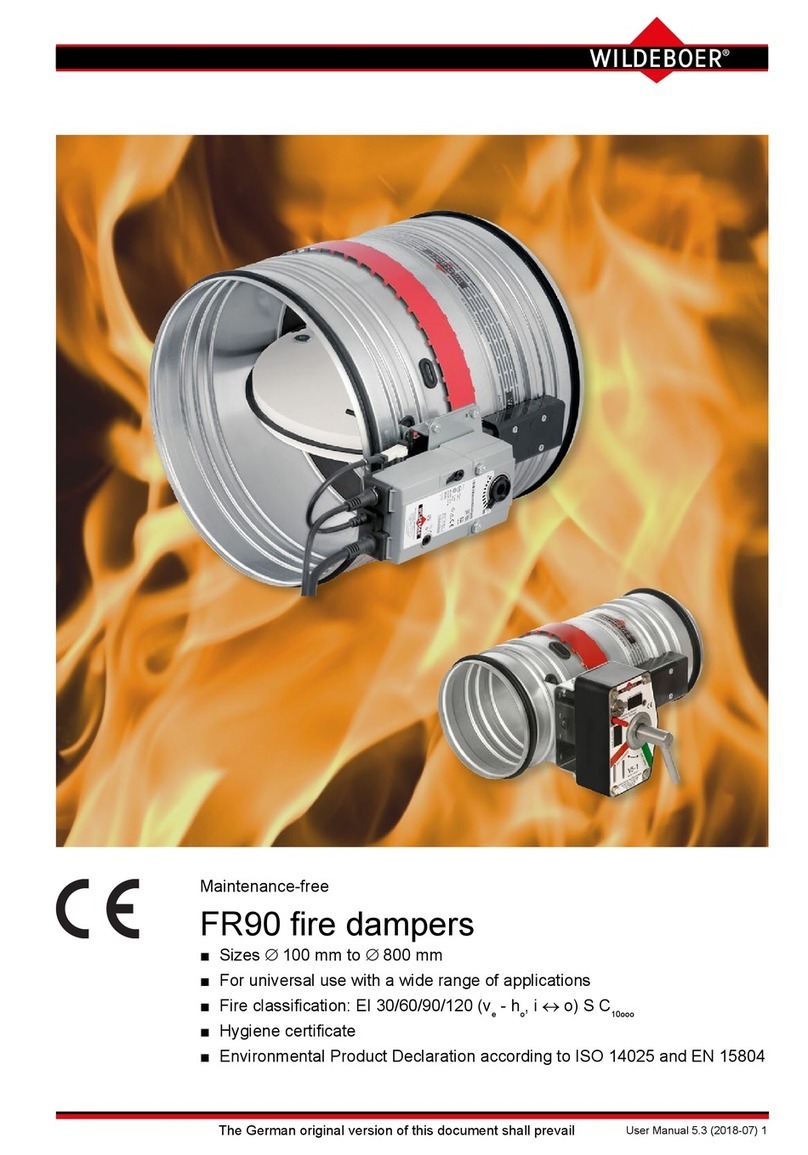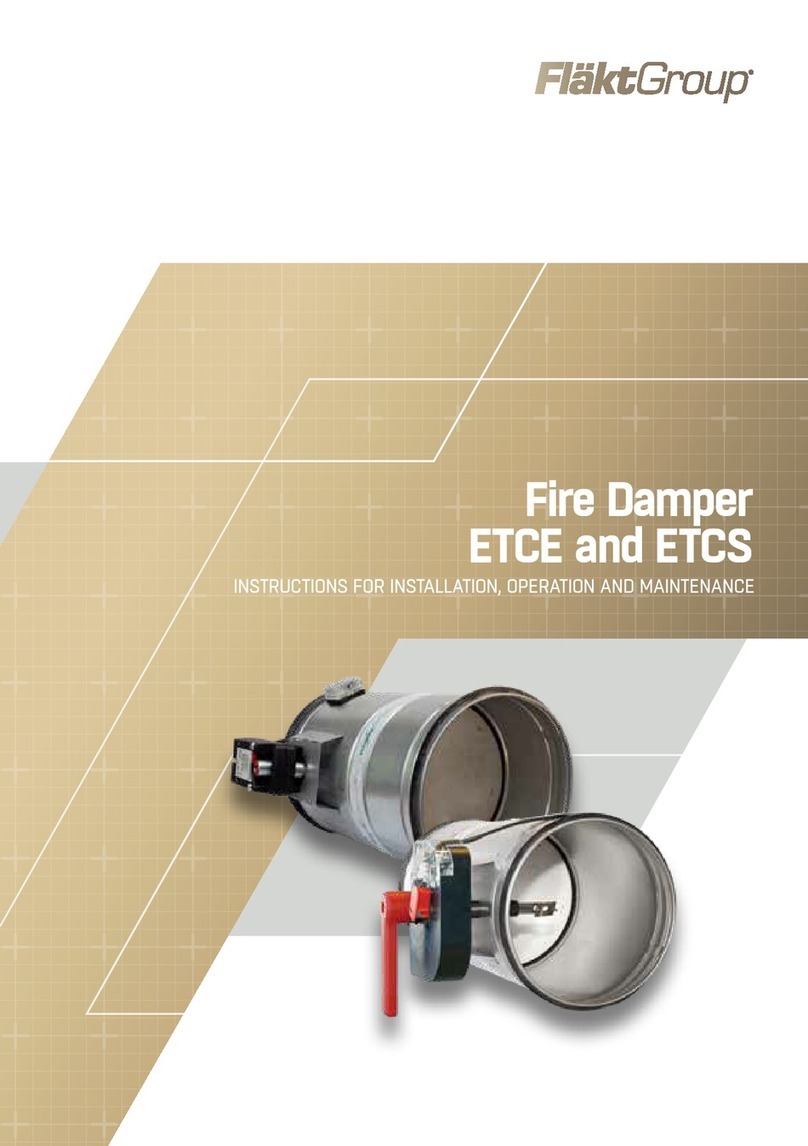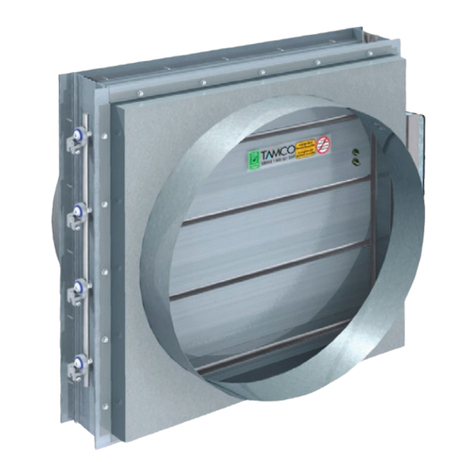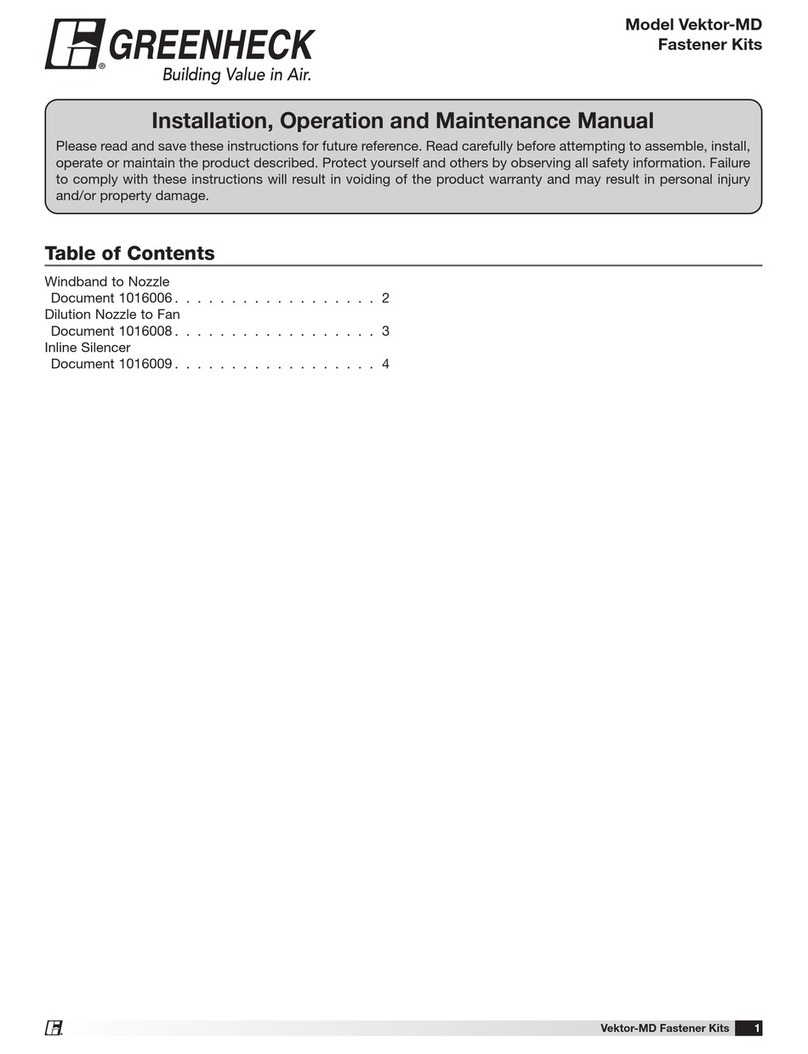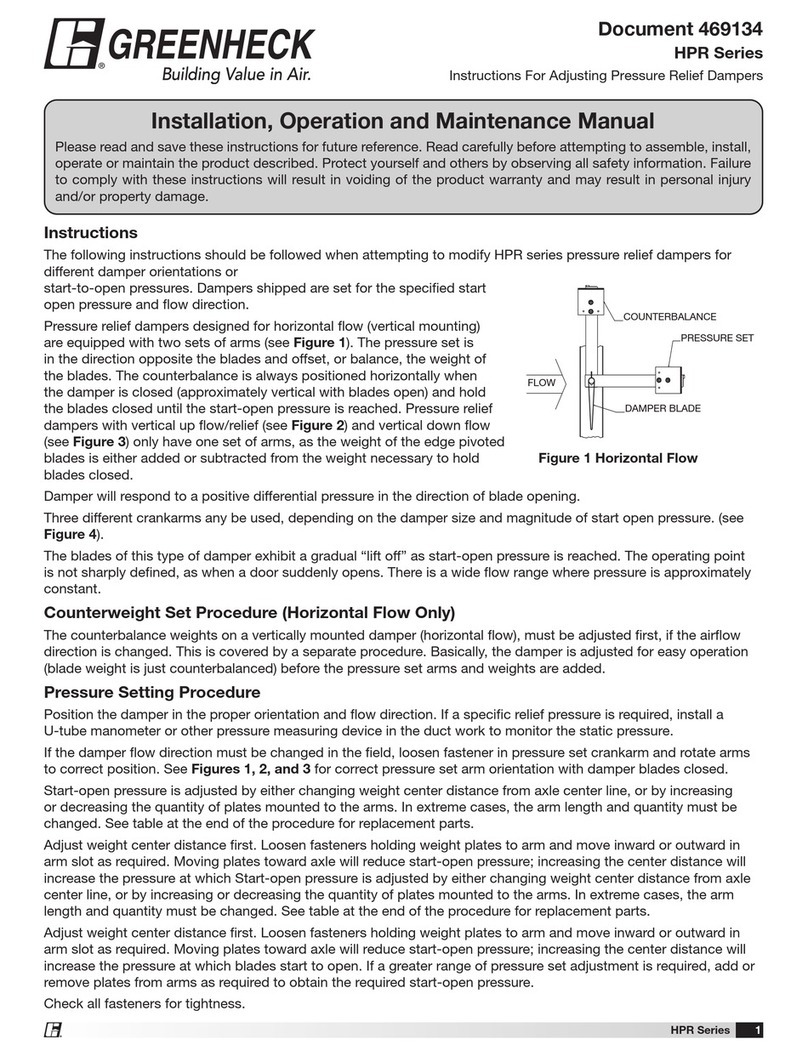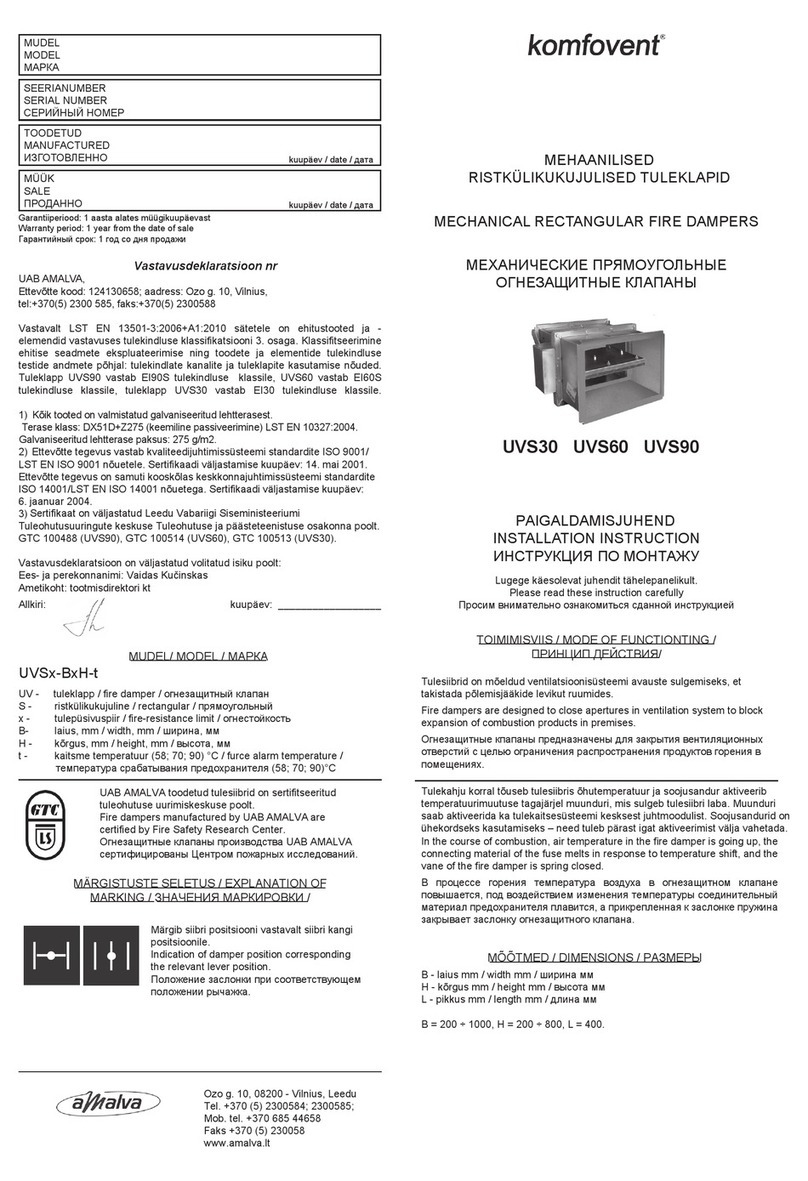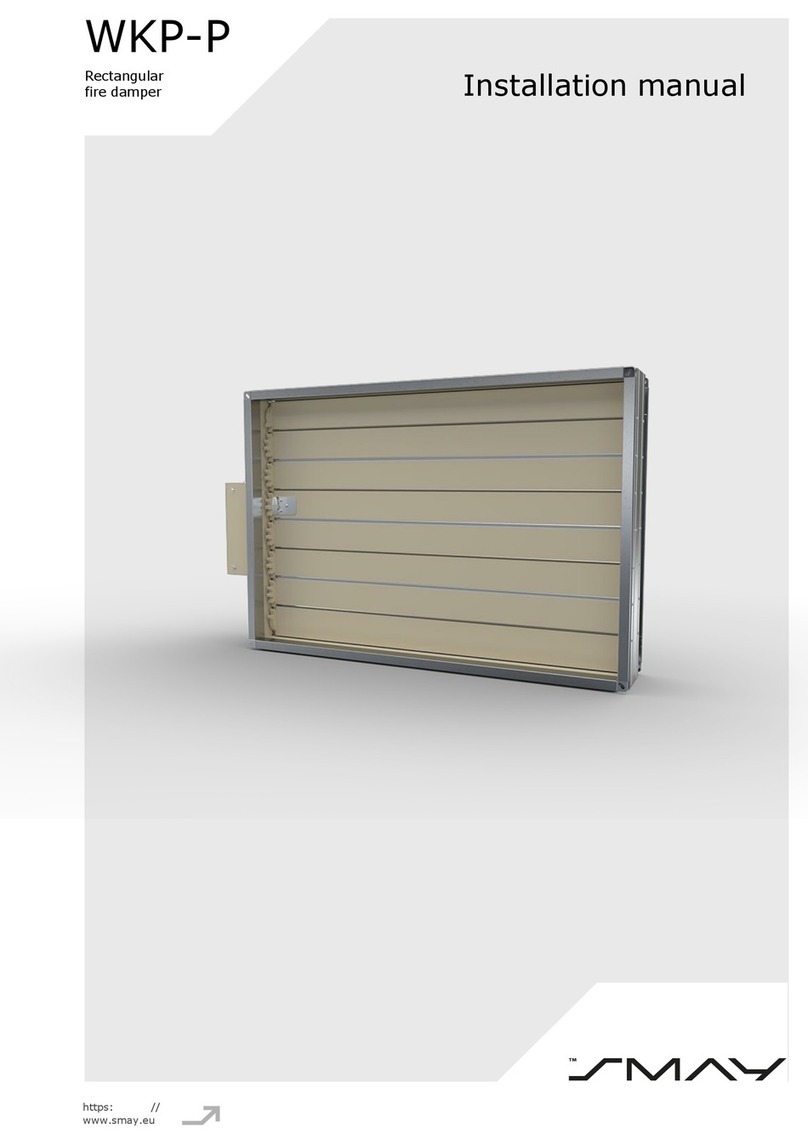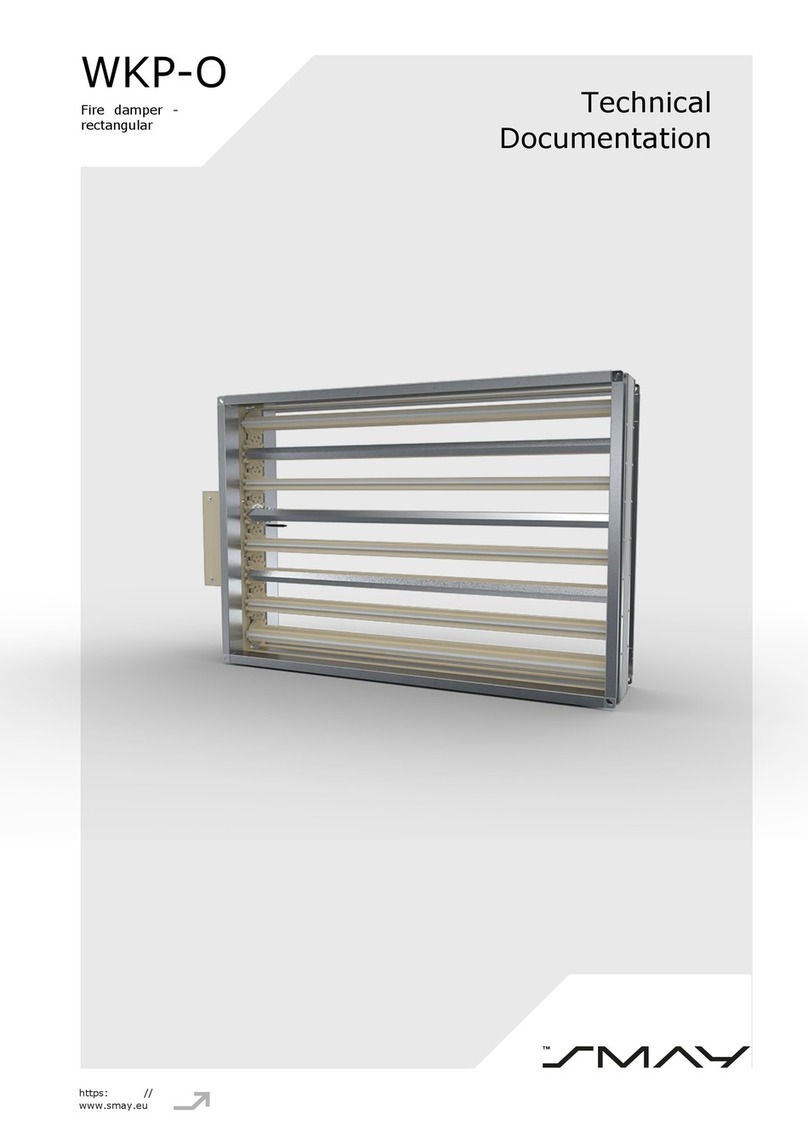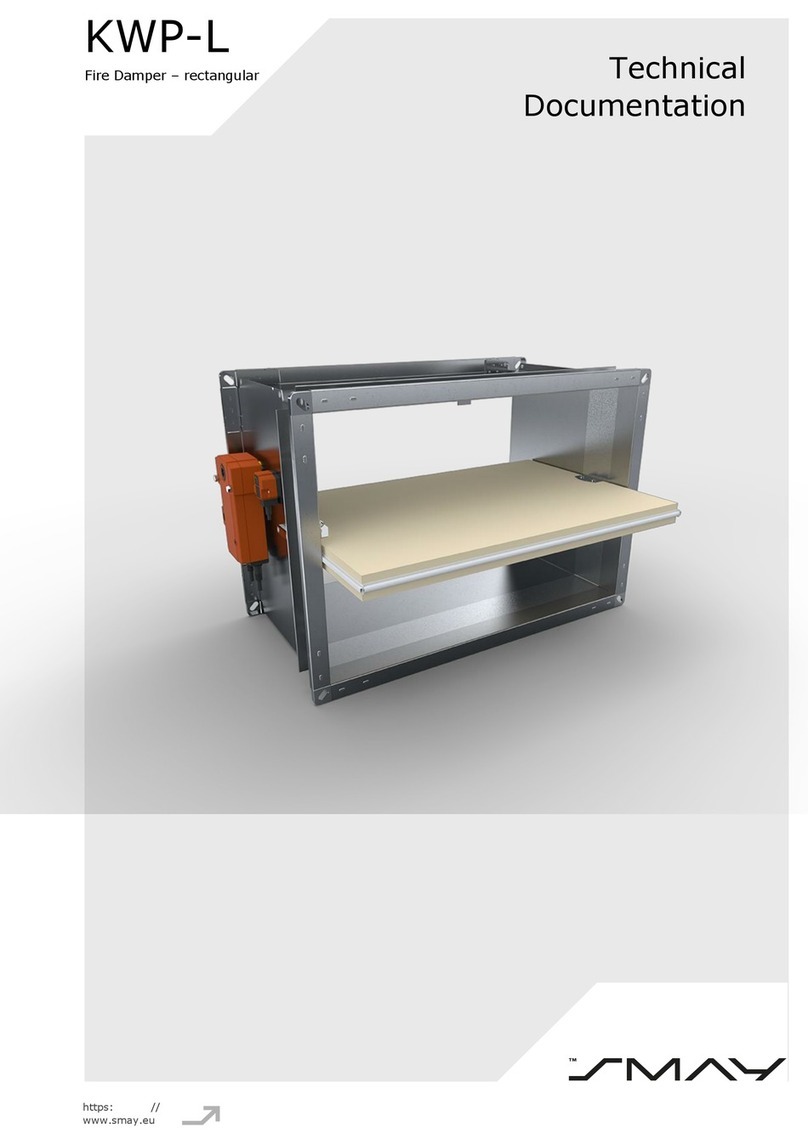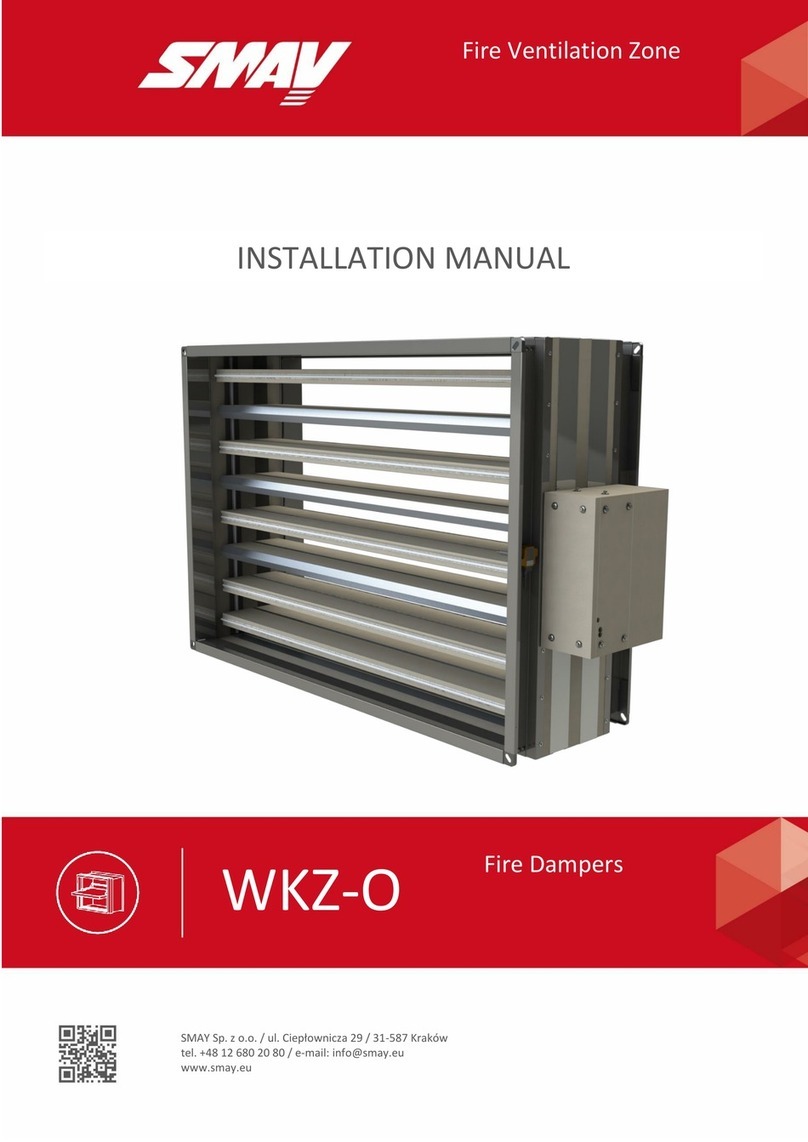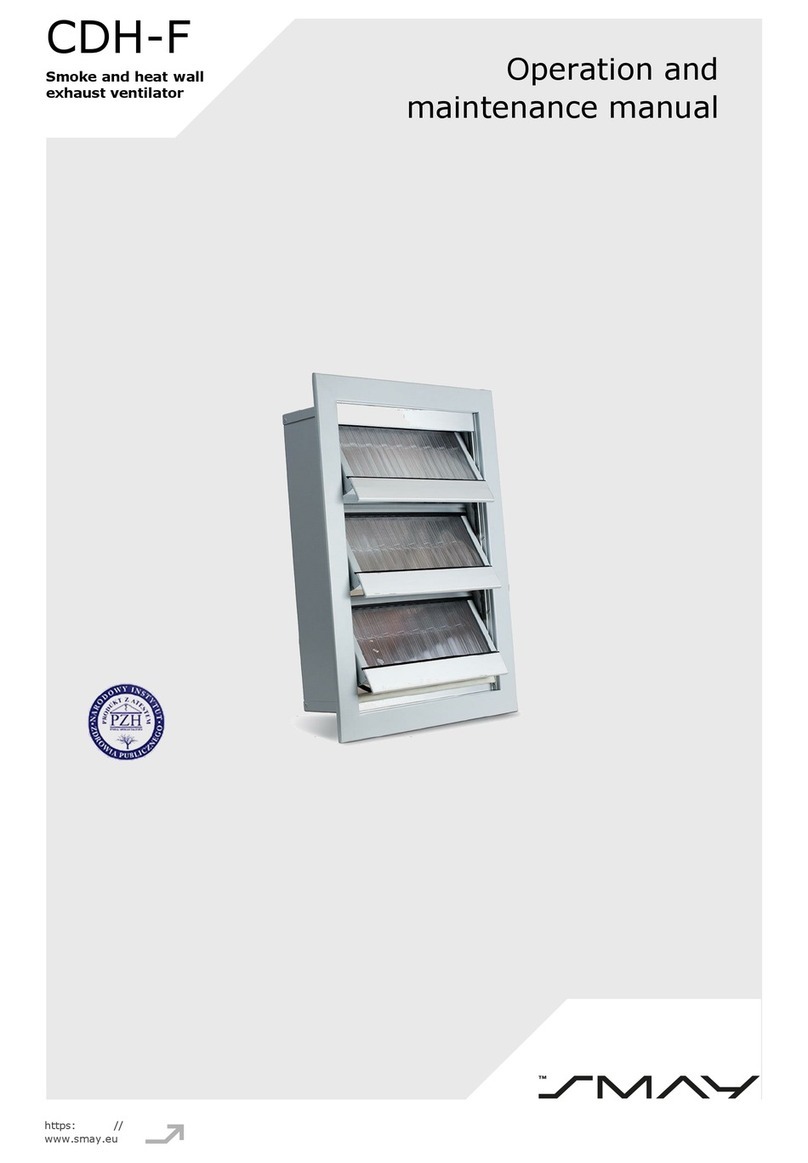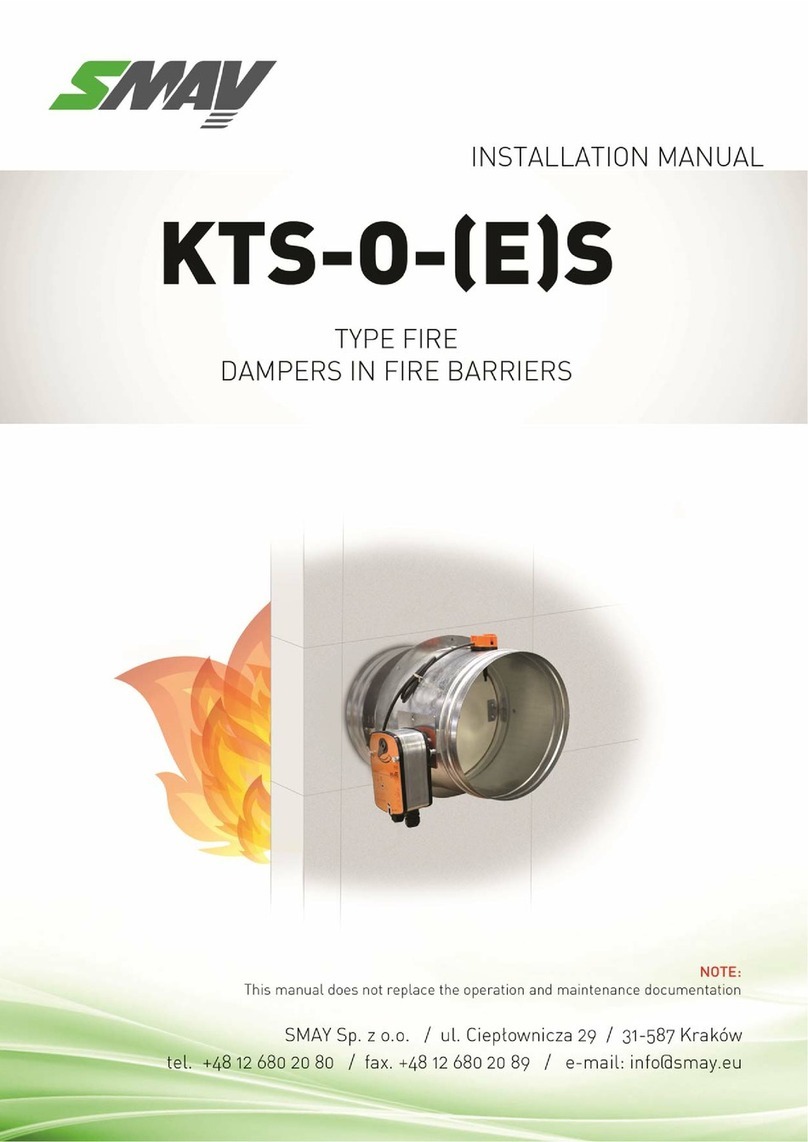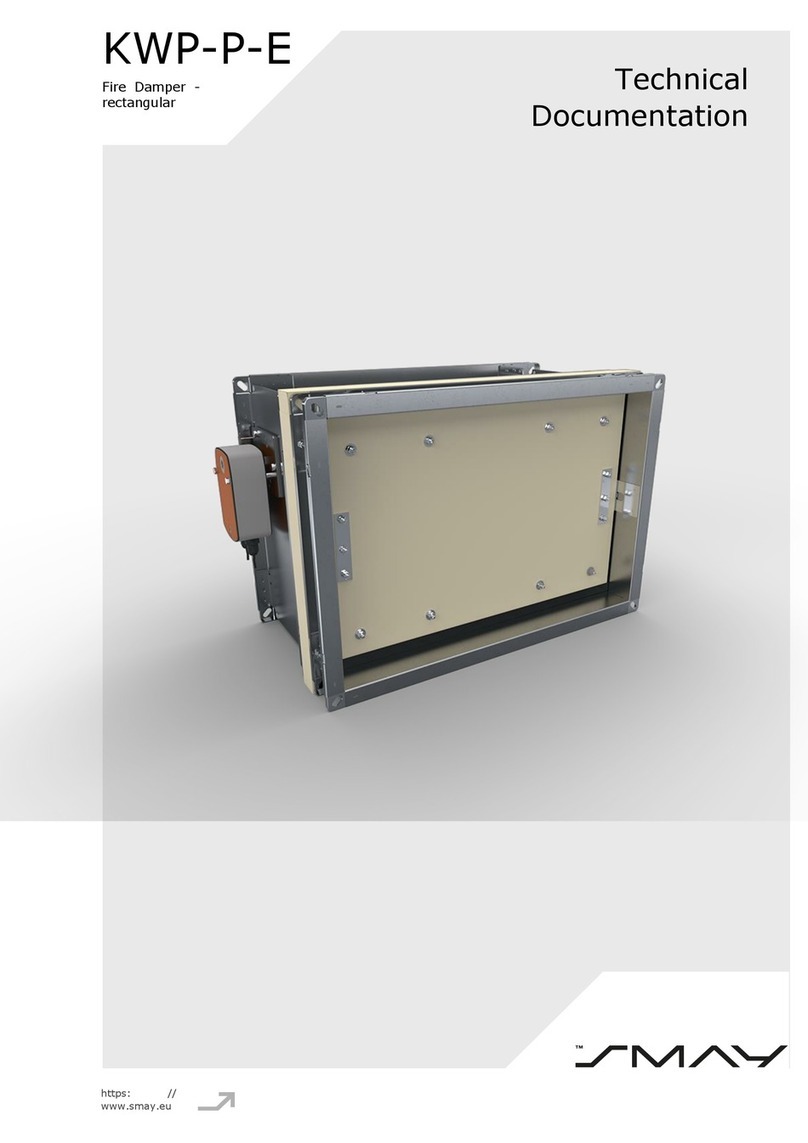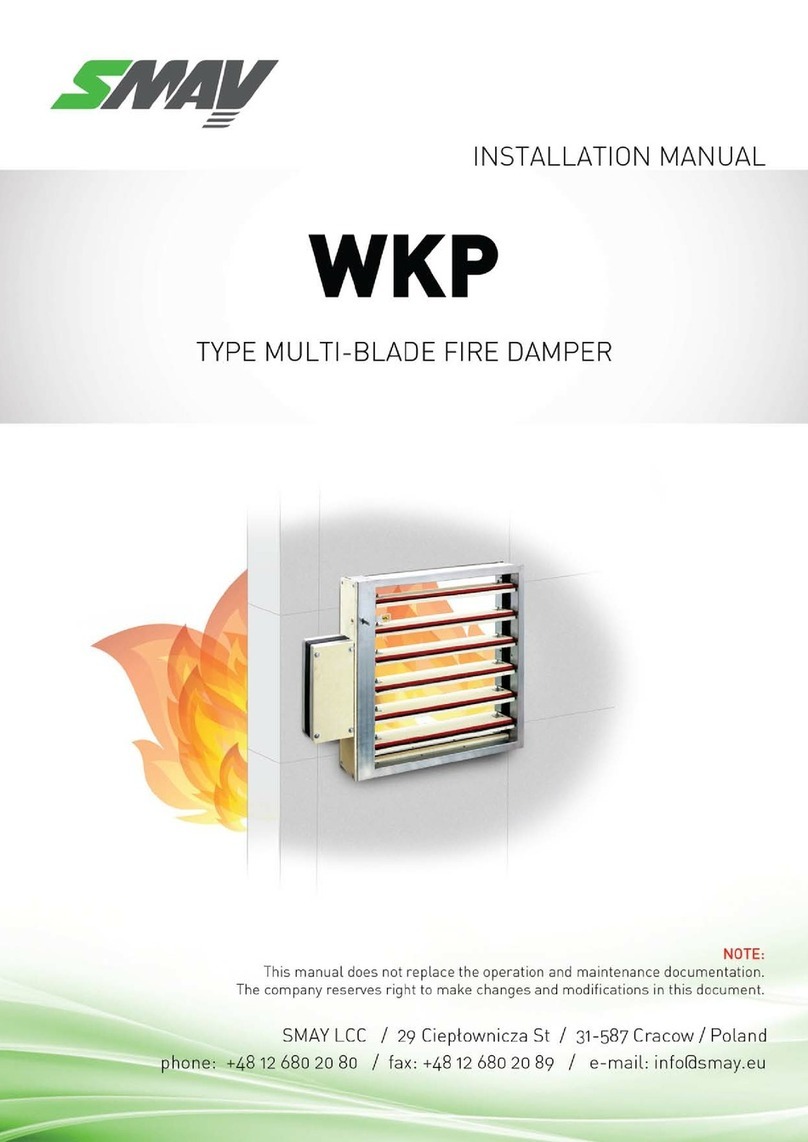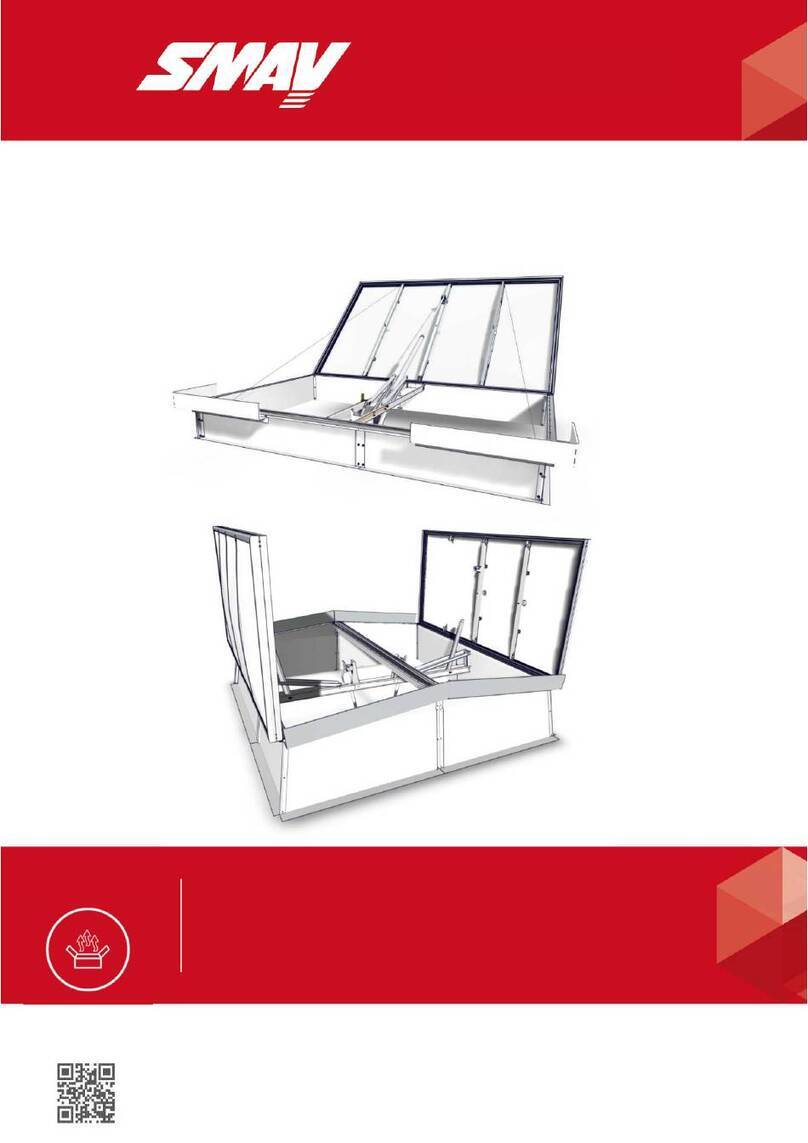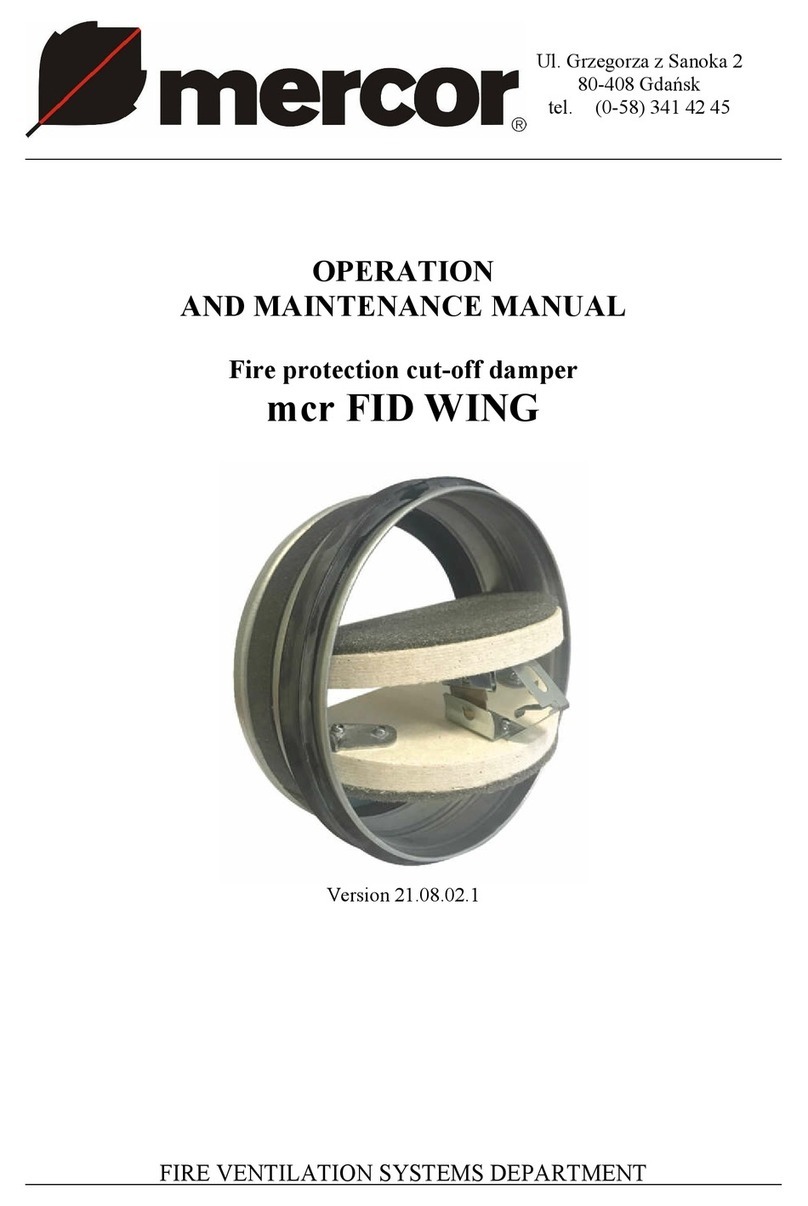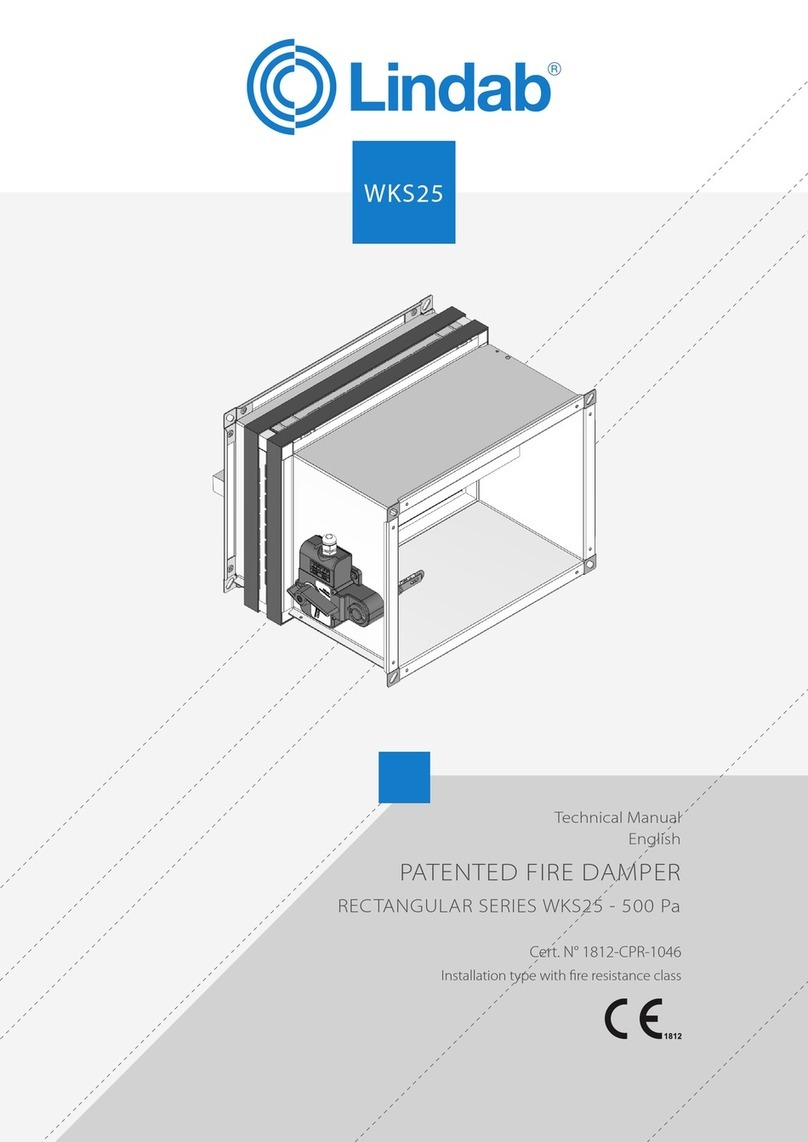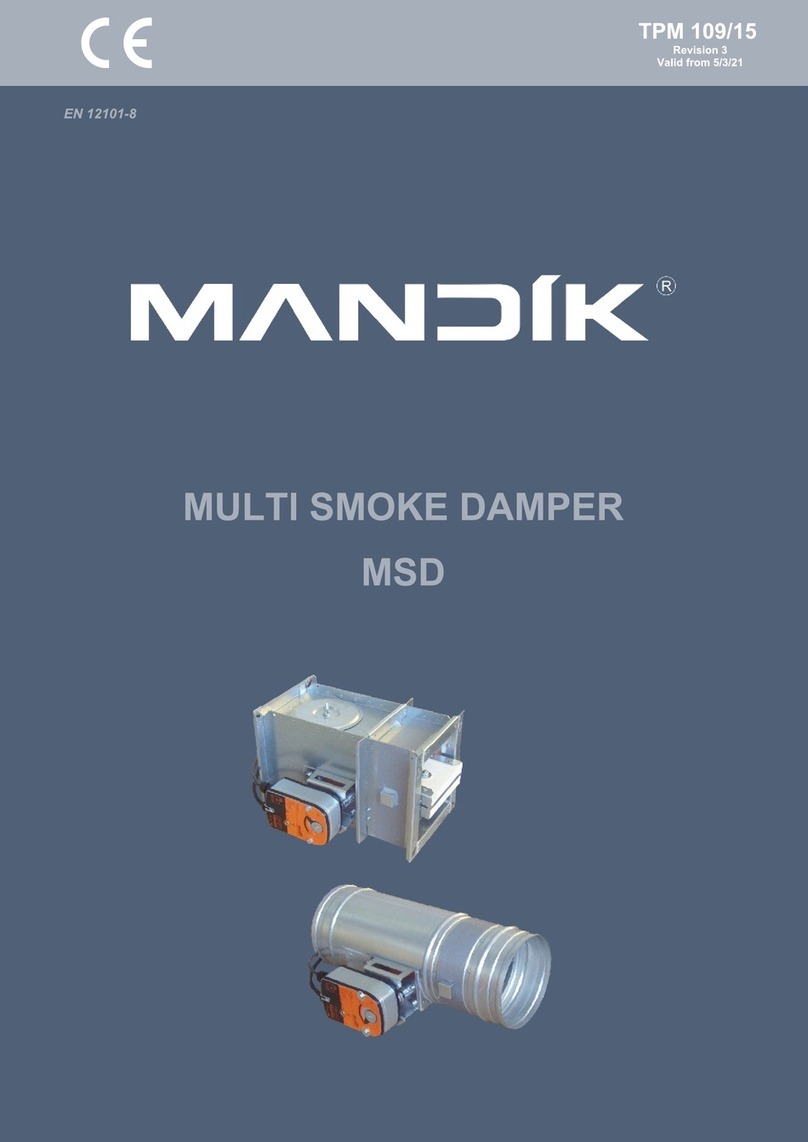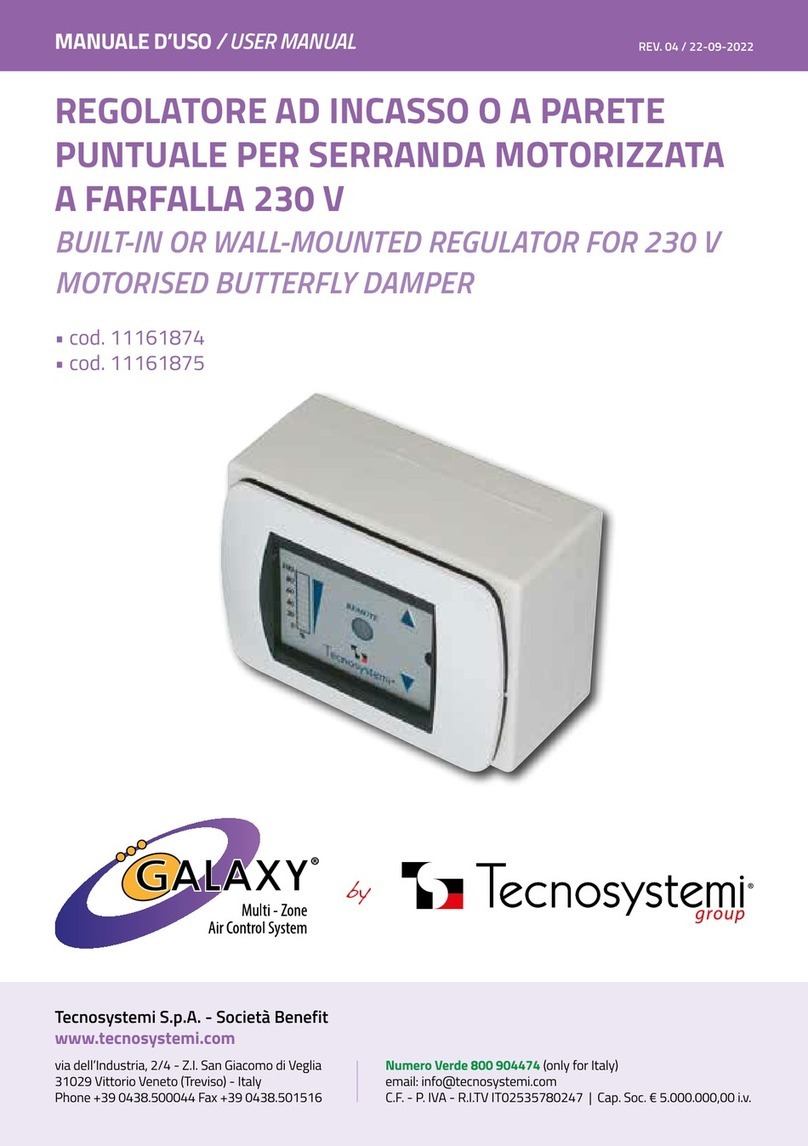
Page 4 of 10
Operation and Maintenance Manual WKP-P
ate: 19.07.19
1. evice installation instructions
Before installing t e fire damper c eck it for damage caused during transport or storage.
C eck if t e damper is able to open and close (full open and close position). In t e case
of WKP dampers open t e damper wit an actuator key. Full opening and closing s all be
smoot (not irregular). Do not pull t e damper baffle in order to open/close t e damper. Doing
so can cause permanent damage to t e device, w ic is not covered by t e warranty.
Before installation, verify t e gap between t e bottom blade and t e inside part of t e body
under t e blade and between upper blade and t e inside of t e body over t e blade. T e gap
size can not be less t an 4 mm. 4 mm feeler gauge is supplied wit t e order.
Before installation secure t e damper wit film or ot er covering material to protect it
against dirt and damage to t e damper elements.
To maintain EIS120, EIS90 declared resistance, insulation and smoke leakage, t e
dampers s ould be mounted in walls, w ic were tested and rated as EI120 or EI90.
It is acceptable to use WKP-P dampers in walls wit ot er fire resistance rating, but in
t is case it s ould be kept in mind t at EI fire resistance rating of t e w ole WKP-P damper
installation is equal to t e fire resistance rating of t e lowest rated element of t e system.
T e WKP-P fire dampers may be installed in vertical space dividers wit bot orizontal
and vertical axis of rotation of blades. In vertical mounting t e recommended position of t e
actuator is above t e damper.
1.1 Installation Technology – Rigid Wall Structure
1. Make a ole in t e wall – 246 mm greater t an t e dimension B and 120 greater t an
dimension H, i.e. B+246 and H+120.
2. Insert t e closed damper into t e mounting ole and support it or suspend in suc a way
t at t e axis of t e damper baffle coincides wit t e wall axis, and to maintain t e
coaxiality of t e damper and t e mounting ole.
3. Once t e damper is set as described above, fill in t e slot between t e damper and t e
wall fully wit mortar, cement mortar, lime-cement mortar or concrete.
4. W en t e mortar is dry (after about 48 ours), remove t e supports or suspension used
for mounting t e damper, c eck if t e damper operates properly and leave it in t e open
position.


